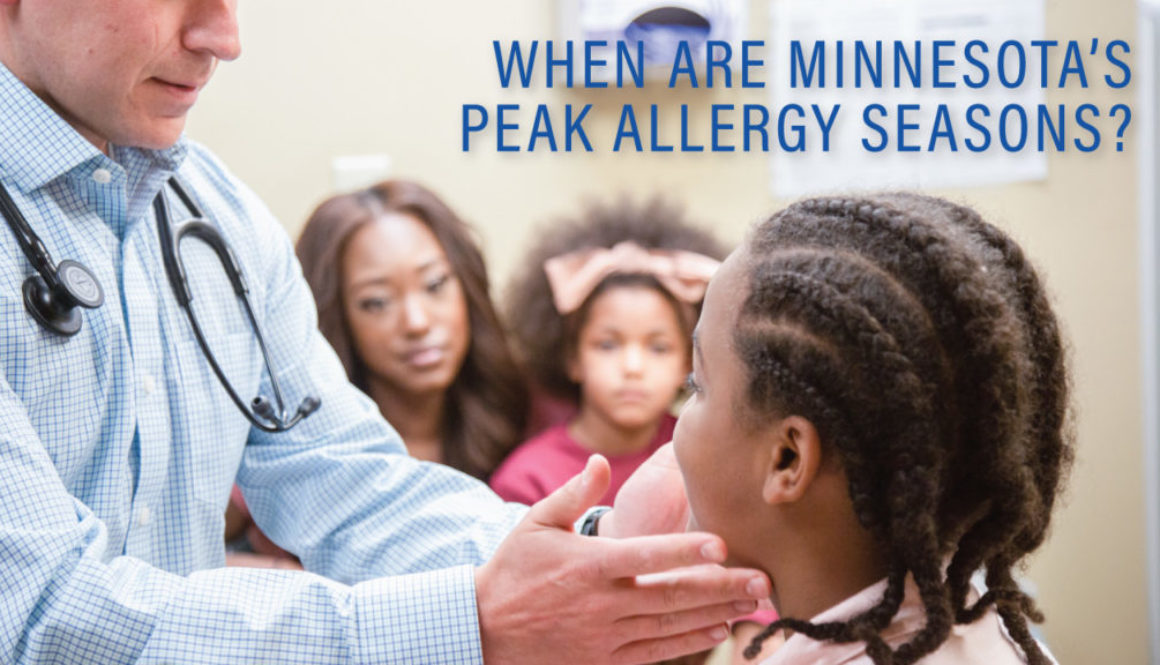When Are Minnesota’s Peak Allergy Seasons?
If you suffer from seasonal allergies and/or asthma, a nice day can become a not-so-nice day pretty quickly. Sore throats, coughing and sneezing, runny eyes and noses, and more severe respiratory symptoms aren’t exactly a walk in the park, and at certain times a walk in the park is a surefire way of triggering them. Our bodies can be allergic to just about anything, but there are specific times of the year when common environmental allergy triggers are more prevalent. Especially important for people who suffer from asthma, knowing the pattern for allergy seasons can help you and your family prepare so you’re able to enjoy the outdoors better, and help keep those allergy aggravators at bay while you’re home. Keep reading to learn about Minnesota’s peak allergy seasons.
1. Weather the Springtime Allergy Peak
When the snow finally melts and days start getting warmer, Minnesotans can hardly contain their excitement to trade in their winter coats for slightly lighter jackets and head outside. But as the ground thaws in April, and rain begins the growing season, the first major allergy season of the year begins. Mold is released from melting snow and aggravated by spring rains, while budding trees release pollen. Elevated levels of mold and pollen are common from April to June.
2. Enjoy Subsiding Summer Allergies
Summer allergies are less common in Minnesota, but for highly sensitive people there’s still a lot to sneeze about in June and July. Grass and weed pollen, spread by landscaping, storms, and wind, can trigger allergic reactions. For some people, physical contact with grass and clippings can result in rashes, and getting too close to flowers can lead to respiratory symptoms. It’s important to be mindful during this dip in allergy season that some people may still be sensitive.
3. Brace For Allergies in Late Summer Through Hard Frost
While early summer months see a decrease in the molds and pollen that most commonly trigger seasonal allergies, there’s a sharp incline during August. As ragweed, one of the most allergenic weeds, begins to pollinate in August, reactions become common and can be severe. Ragweed can be carried for up to 150 miles, making it hard to avoid. Other weed and grass pollens combined with ragweed make this the most extreme allergy season. During late fall and early winter, as leaves are shed and we see early snows fall and melt away, mold becomes a problem again, as well.
4. Mitigate Exposure in Peak Seasons
Even allergy sufferers don’t want to avoid the outdoors altogether during the milder Minnesota months, so mitigating exposure is a great way to help plan your allergy season activities. You can track pollen in your area with this website to see when counts are high. Humidity exacerbates pollen, so make sure to plan indoor activities on humid days. Avoiding the outdoors when pollen counts are highest during the morning is also helpful. Wearing face masks and sunglasses outdoors when risk factors are present and using air filters indoors can improve quality of life during peak seasons. Avoid blowing leaves and don’t let mold-allergic kids jump in leaf piles during the autumn. Keep trees trimmed back from houses, and remember to wash clothes right away after exposure to molds and pollens to diminish contamination in the home.
5. Manage Your Allergies With Richfield Medical Group
Allergies are an unpleasant part of life. In addition to the advice above, working with your doctor to track and manage you and your child’s allergies will help make Minnesota allergy seasons safer and a lot more fun. At Richfield Medical Group, we take an active role in helping improve the health of our patients. We foster lasting relationships through communication, care, education and treatments. Autumn is a tough season for Minnesotans with allergies, so don’t hesitate to give us a call if you need help managing your allergies. Contact us today at https://richfieldmedicalgroup.com/ to schedule your visit.




